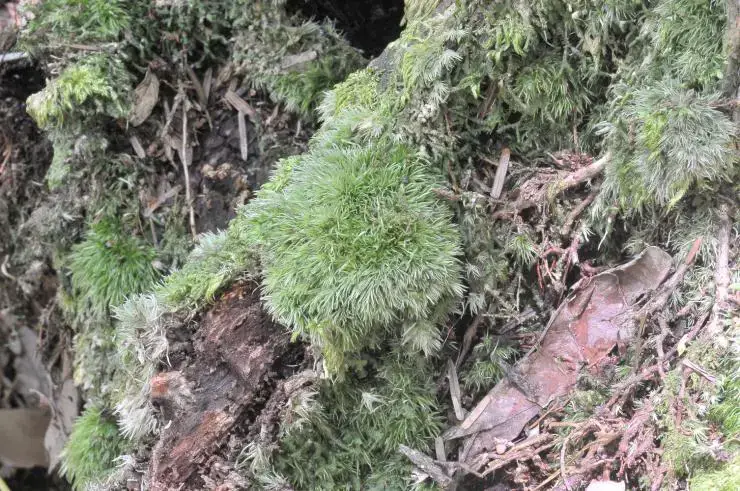
7037e79d418c961c5141889e083833ce.jpg from: https://taieol.tw/muse/digi_object/2355523fe7d6b11d4b7a8ac495911fd7
Acroporium brevisetulum: The Tiny Moss with a Big Story
Introduction
When it comes to the world of mosses, Acroporium brevisetulum (Müll.Hal.) Broth. may not be a household name. But this tiny moss, a member of the Sematophyllaceae family, has a fascinating story to tell. In this blog post, we’ll dive into the details of A. brevisetulum, from its unique morphology to its global distribution and ecological roles. Get ready to be amazed by this miniature marvel!
Background on Mosses
Before we get into the specifics of A. brevisetulum, let’s briefly review what mosses are. Mosses are small, non-vascular plants in the division Bryophyta. Unlike other plants, they lack true roots, stems, and leaves. Instead, they have leaf-like structures called phyllids and absorb water and nutrients directly through their surface. Mosses are found all over the world in a variety of habitats.
Morphology and Identification
Acroporium brevisetulum is a pleurocarpous moss, meaning it has a branching, creeping growth form. Its stems are prostrate to ascending and irregularly branched. The leaves are ovate-lanceolate, concave, and have a short, double costa (midrib). The leaf margins are entire below and serrulate at the apex.
One of the most distinctive features of A. brevisetulum is its alar cells – the cells at the basal angles of the leaves. In this species, the alar cells are inflated, thin-walled, and often colored (usually orange or brown). This is a key characteristic for identifying A. brevisetulum and separating it from similar species.
Global Distribution and Habitat
Acroporium brevisetulum has a wide distribution, being found in tropical and subtropical regions around the world, including:
- Southeast Asia (Thailand, Malaysia, Indonesia, Philippines, etc.)
- Pacific Islands
- Central and South America
- Caribbean
- Africa
This tiny moss is most commonly found growing on tree trunks, branches, and logs in lowland to montane forests. It prefers humid, shaded environments.
Ecological Roles and Adaptations
Like other mosses, A. brevisetulum plays important ecological roles:
Moisture retention: Mosses act like sponges, absorbing and retaining water. This helps regulate moisture in their immediate environment.
Nutrient cycling: As mosses grow and decompose, they contribute to nutrient cycling in their ecosystems.
Microhabitats: The dense mats formed by mosses like A. brevisetulum create microhabitats for various invertebrates and other organisms.
A. brevisetulum has several adaptations that allow it to thrive in its preferred habitats:
- Its creeping, branching growth form allows it to efficiently cover surfaces.
- The inflated alar cells may aid in water storage and retention.
- Its small size allows it to grow in places where other plants cannot, such as on vertical tree trunks.
Conclusion
Acroporium brevisetulum may be small, but it is a fascinating and ecologically important moss. From its distinct morphology to its global distribution and ecological roles, this species demonstrates the incredible diversity and adaptability of mosses. The next time you’re walking through a tropical forest, take a closer look – you might just spot this tiny moss with a big story!